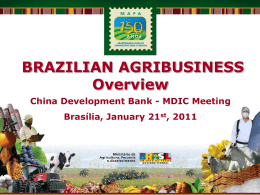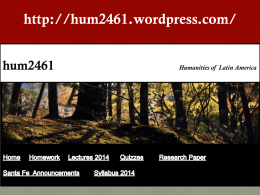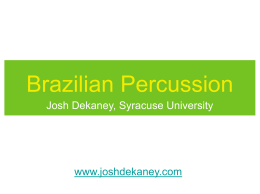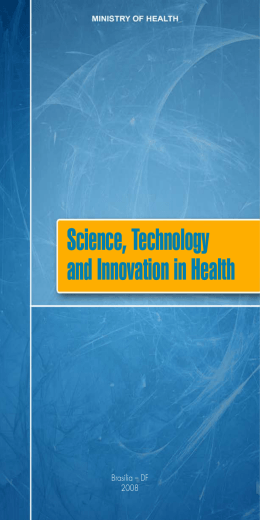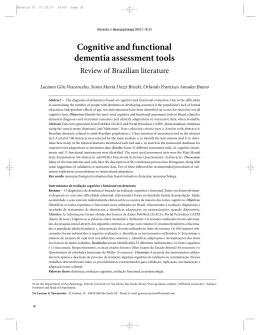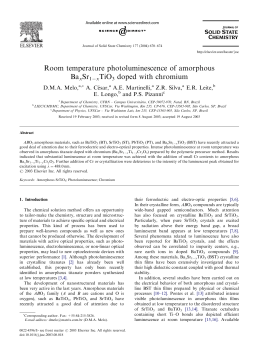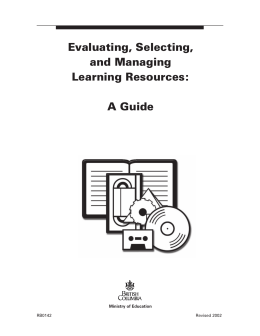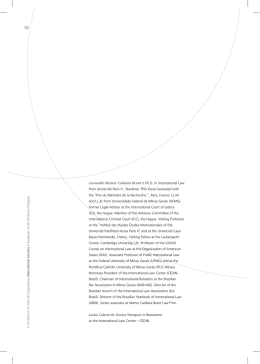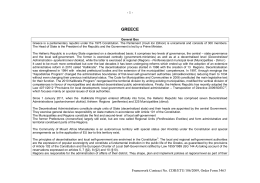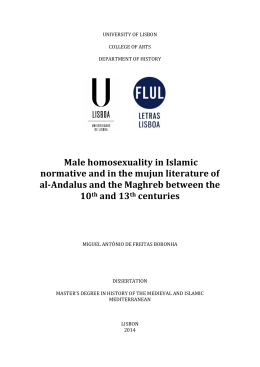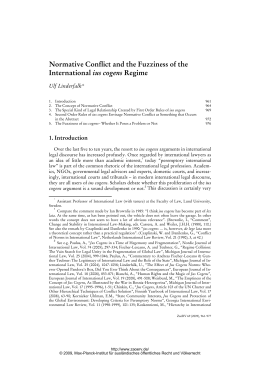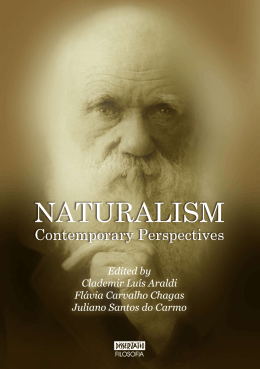THE ARCHITECTURE OF ‘NR 18’ (Regulatory Norm n° 18) – THE BRAZILIAN TRIPARTITE MODEL OF NORMALIZATION IN SAFETY AND HEALTH AT WORK FOR THE CONSTRUCTION INDUSTRY C. A .Castor de Pontes, S. di Cavalcanti Pinheiro Ministry of Labor and Job, João Pessoa, Paraíba, Brazil ABSTRACT This article deals with an evaluation of the Brazilian model of safety and health for the industry of construction, focusing on its legal and historical contextualization, describing the aspects of the peculiar procedure of normative construction in force and establishing the systematized outline of its structure. It also describes a critical analysis which identifies the need for overcoming emerging disfunctions in the normative process. Finally, it declares to be convenient to rethink the architecture of NR 18 so that it continues to be an inductive instrument of advances of safety and health at work in the industry of Brazilian Construction. 1. INTRODUCTION The Brazilian model of normalization in safety and health is supported, first by the Brazilian Federal Constitution which declares in its art. 7, that “ the rights of the worker are...:... XXII - reduction of risks inherent to work, by means of norms of health, hygiene and safety; XXIII - premium for painful, unhealthy and dangerous activities, in the form of law; ... XXVIII - insurance for accidents at work, provided by the employer, without excluding compensation which the latter should provide, whenever there is bad faith or guilt; ...” (BRAZIL, 1988). In an infra-constitutional perspective, labor prevention is the objective of Act 6.514, of December 22, 1977, which changed chapter V of the Consolidation of Labor Law related to Safety and Medicine at Work. This legislation was regulated by the Decree 3.214, of June 1978 of the Ministry of Labor which approved the Regulatory Norms – NRs – in Safety and Medicine at Work, 31 (thirty-one) at present, dealing with the most diverse subjects. It is in this context that the NR 18 is inserted, being called “Conditions and Work Environment in the Industry of Construction”. It is worth pointing out that the NR 18 is today the most significant legal instrument for promoting prevention at work in a segment which, according to EMPLOYEMENT (2005), generates about 1.300.000 (a million and three hundred thousand) formal jobs, accounts for approximately 16% (sixteen per cent) of Brazilian GDP (Gross Domestic Product) and is one of the most important in the country. When considering labor accidents, according to data from the Federal System of Work Inspection-SFIT (BRAZIL, 2005), if only figures referring to the sub-sector of buildings are computed, in the year 2004, the construction is responsible for 20,8% (twenty-eight per cent) of fatal accidents analysed by work inspection. Such indices show the need to choose the sector as a strategic objective of any public safety and health policy at work. 2. HISTORICAL EVOLUTION N18, approved in 1978, had about 240 (two hundred and forty) provisions, one third of them dealing with scaffolding. Though weakly, it presented demands for the need of providing potable water and sanitary facilities. In 1983, NR18 had its first great revision. As in the version of 1978, it was named “Work of Construction, Demolition and Repairs”, and this edition of the Norm broadens its content to 420 items approximately, with aspects such as sanitary conditions and comfort that become important, and with the insertion of topics referring to CIPA (Internal Commission of Accident Prevention), fire prevention and activities in reinforced cement, masonry and finishing. 1 In 1995, NR18 underwent its most important change. This process, however, according to BRAZIL (1995), started one year before with the creation, by the Ministry of Labor, of ten work groups in several states and regions of the country. The result of the work of this group was sent to a central commission which evaluated the material produced and worked out a basic text available for public consultation in the D.O.U – Official Daily Government Newspaper (a state instrument where governmental acts are published). This consultation generated approximately 3000 (three thousand) suggestions and propositions from bodies, companies and professionals from the technical community, and those contributions were, when possible, incorporated to the mentioned text. This material was taken to a tripartite and parity meeting held from 15 to 05/19/2005 at the Ministry of Labor, in which government representatives, workers and employers approved consensually the text of the Norm sanctioned by the Ministry of Labor, according to D.O.U. of 07/07/1995. Therefore, NR18 was the first Regulatory Norm worked out in the tripartite format, a model which, from then on, was adopted by the Brazilian government for any process of normative alteration in safety and health at work. 3. NORMATIVE PROCESS The text of N18 of 1995, according to PONTES (1999), brought equally in its core a peculiar form of carrying out the revision of its content. Thus, since then, all propositions for changing the normative text must start obligatorily from the Regional Permanent Committees about Conditions and Work Environment in the Industry of Construction. According to the tripartite and parity model, the National Permanent Committee (CPN) and the Regional Permanent Committees established by NR18 itself, have as one of its main attributions to express their opinions about any proposition for altering the norm. By democratizing the debate at national level, this procedure allows for a beneficial depuration of propositions presented, thus qualifying any necessary change. It is also worth mentioning that the CPN is the final instance of deliberation of the process and the tripartite consensus is an indispensable requirement for the approval of any proposition for changing the Norm. The procedure is concluded with the governmental sanction, through a Ministry decree, of the proposition agreed upon. However, it should be noted that this model still needs adjustment to be fully implemented. To do that, a few questions should be considered. In this sense, one should observe that the item 18.34.2.6. of N18 in its paragraph “a” establishes as one of attributions of CPN “to deliberate about the propositions presented by the CPRs, after hearing the other CPRs”. This precept affirms, therefore, that for deliberation and later approval of amendments or normative changes, the CPRs must declare their positioning about the subject being examined and that they must serve as a referential in order to admit or not the change proposed. It happens that so far the necessary parameters for this purpose have not been defined. That is, it is necessary to answer questions such as: How can one consider that a CPR has been “heard”? From when would a CPR be qualified to participate in the normative procedure and how should this process occur? Considering the universe of CPRs, what is the minimum quorum and the majority required for the approval of a determined alteration? The absence of answers to these and other questions may jeopardize the democratization of the debate, the quality of the final product of the process and the indispensable safety demanded by a model of norm alteration that is supposed to be responsible, effective and transparent, the objectives that one perceives to be strongly pursued by the legislator. In the limit, the lack of regulation of this normative observance, besides making impracticable the implementation of eventual alterations of the Norm by those whom such measures are meant for, they may cause, if provoked by someone who eventually feels aggrieved, the judicial declaration of nullity of the whole process. Besides, this fact may reach all the alterations that have happened since 1995, thus becoming without effect. Therefore, the question should be urgently treated in a consequent way. 4. SYSTEMIC STRUCTURATION NR18 can be regarded as a work whose engineering of construction is based on four blocks, which, though distinct, are articulated and intercomplete themselves. They are: management, technical/operational, procedures and labor comfort (PONTES, 1999). 2 4.1 Management In this block we can find program, projects and actions turned to the management of prevention. In it are topics such as PCMAT – Program of Conditions and Work Environment in the Industry of Construction, CIPA and Training. The PCMAT must be worked out and carried out by a professional legally qualified in safety at work and consider, among others, a survey of occupational risks, projects of collective and individual protection, technical specifications and schedule for the establishment of predicted measures. The training, on its turn, should be administered in an admissional and periodical way and should focus on the procedures and operations 4.2. Technical/operational A segment in which are inserted preventive measures referring to diverse aspects present in the construction (demolition; digging up, foundations and taking rocks to pieces; carpentry; steel frames; metalic and concrete structures; protection against falls; movement and transportation of people and material; scaffolding; masonry, lining and finishing; covering and roofs; service in floats; limited places; electric wiring; machines, equipment and diverse tools; individual protection equipment; storing and stock of material; transportation of workers; protection against fire, among others). 4.3. Procedures A block in which are defined administrative actions related to previous communication of the start of activities, statistical data, recommendation of measures in case there is a fatal accident, among others. 4.4. Labor comfort Here are allocated measures referring to the well-being and satisfaction of workers in the work environment, such as conditions of the area of work (dressing-room, lodging, place where they have meals, kitchen, laundry, leisure area, bathrooms), supply of work clothes and bed linen, quality water, outpatient clinic in work fronts, among others. To the mentioned four blocks, a fifth could be added referring to transversal aspects which present interfaces with the whole Norm and which explains itself in topics as the possibility of alternative solutions to the normalized measures, the prediction of permanent committee installation and technical recommendation procedures. 5. CONCLUSION Finally, it should be pointed out that the advent of NR18 had, as a result of greater impact, the installation of a space of permanent interlocution between government, entrepreneurs and workers (PONTES, 1997) and it was this phenomenon that generated a Norm tending to meet the needs of a given historical moment. However, after ten years of its process of conception, maybe the time has come to evaluate whether the model adopted is still capable of meeting the emerging demands of the sector. In this context it is observed that a more and more accentuated tendency of making a legal text still more prescriptive, full of details and exhaustive to the detriment of a more conceptual perspective meant to contemplate aspects mainly turned to the planning and organization of prevention. Such a fact has granted NR18 a profile that is more technical than regulating – depreciating its objective – and at the same time being responsible for a true normative inflation which has been making its content too analytical and long. Thus, it seems convenient to incorporate to this scenario the idea of rethinking the architecture – and the respective gears – of the normative text so that it continues to be an inducing instrument of advances in safety and health at work in the Brazilian Industry of Construction. Therefore, there is still a lot to be done. REFERENCES BRAZIL. Federal Constitution. 1988. BRAZIL. Ministry of Labor. Fundacentro. NR series: Conditions and work environment in the industry of construction. 18. São Paulo. 1995. BRAZIL . Federal System of Work Inspection. Brasília. 2005. 3 EMPLOYEMENT. Available in: <htpp://www.sindusconsp.com.br/secao/secao.asp>. Access on: March 29 2005. PONTES, Carlos Alberto Castor de. Formation and information of workers in the prevention of labour risks : the brazilian experience. In: RISK AND WORK EURO-AMERICAN MEETING, 4, 1997:Salamanca. Procedings…Salamanca University/Mapfre Foundation, 1997, p. 203-213. PONTES, Carlos Alberto Castor de. The accident issue in the building industry in Brazil: diagnosis and perspectives. Qualidade na Construção, São Paulo, n. 15, 1999, p 19-22. PONTES, Carlos Alberto Castor de. State of the art of NR 18. In: INTERNATIONAL CONGRESS OF TECHNOLOGY AND MANAGEMENT IN CIVIL CONSTRUCTION, 1, Recife, 1999. Lecture. 4
Download

